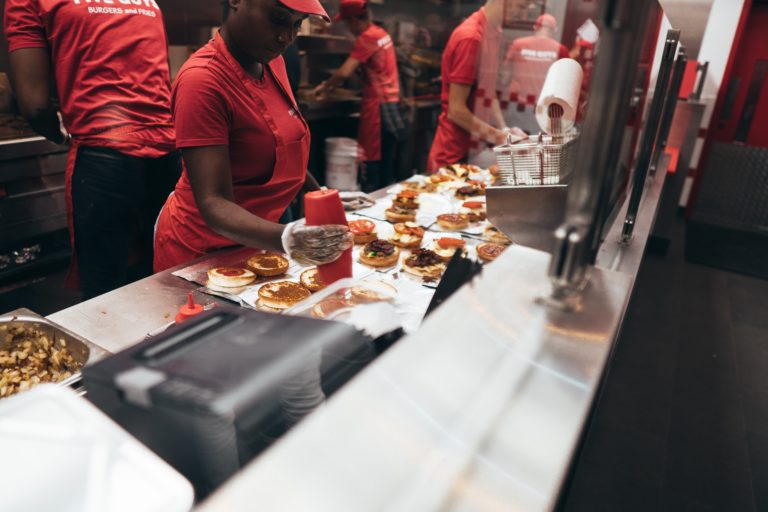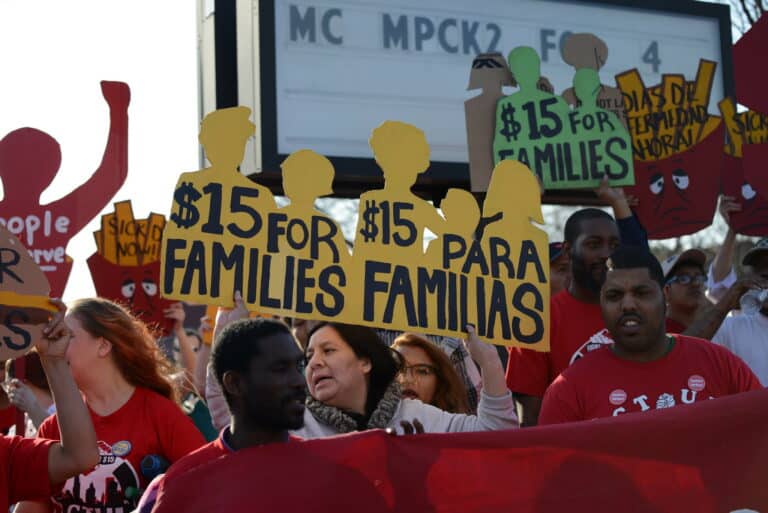
Dr. David Doorey is an Associate Professor of Labor and Employment Law at York University in Toronto.
The recent wave of union organizing in the service sector has raised hopes that a fundamental transformation is occurring in the United States that will revitalize collective bargaining and bring millions of young workers into the labor movement. At the epicentre of this movement is a mass campaign to organize Starbucks’s employees. As of this week, 201 Starbucks stores across 32 states have unionized and workers at dozens more stores have filed petitions to unionize. In terms of organizing success, this is a significant accomplishment worthy of the media attention it is receiving.
However, organizing is only the first stage in an extended and perilous journey towards sustainable collective bargaining. Harvard’s Paul Weiler described the reward for successful organizing as a “licence to bargain.” Whether that licence results in a sustainable collective agreement depends upon a range of factors that influence the parties’ relative bargaining power. One important factor in this regard is how the law structures negotiations. Who bargains with whom?
This is an important point that goes to the fundamental challenge of retrofitting a collective bargaining model designed for the mass production economy of the 1930s to the twenty-first-century service economy. When the United Auto Workers sat across the table from executives at General Motors and threatened to strike if their proposals were not met, GM had good reason to listen. A strike by thousands of workers at once would effectively halt production, costing GM millions of dollars in lost revenues and profits.
The situation at Starbucks is very different. While the success of Starbucks Workers United (SWU) in organizing some 200 stores is impressive, this amounts to just over 1 percent of the more than 15,000 Starbucks stores in the U.S. When SWU sits down to bargain a collective agreement for each of its newly organized Starbucks stores, it will confront a corporate behemoth intent on demonstrating to Starbucks employees working in the 99 percent of stores that remain non-union that there is no advantage to unionizing. A strike by workers at one or even a handful of small stores will be an annoyance, but hardly a reason to abandon this overarching objective.
The difficult task of negotiating a strong collective agreement with a large and uncooperative corporation that operates through many small workplaces is exasperated by existing labor laws which provide no mechanism for unions to insist upon centralized bargaining. SWU elected to organize and petition on a store-by-store basis. This makes perfect sense as an organizing tactic. It is much easier to organize one location on Main Street in Denver than 200 or 10,000 stores scattered across the country all at once. The Wagner model’s requirement for a union to obtain majority employee support in a bargaining unit to obtain a licence to bargain encourages unions to target organizable units, which are usually smaller units. However, smaller units leave the union with little bargaining power when it comes to negotiating a collective agreement.
This dilemma is well-known. The Wagner model’s default towards enterprise-level bargaining makes it almost impossible for unions to build a critical mass of support within large corporations like Starbucks. While the usual disclaimer that the prospect of progressive labor law reform in the U.S. is bleak to non-existent is in order, it is worthwhile to point out that other jurisdictions have responded creatively to this challenge.
One legislative solution is to introduce sectoral collective bargaining that would permit unions to negotiate employer-wide or industry-wide standards. New Zealand recently enacted a model that would permit unions to apply for sectoral bargaining to represent all employees in a single occupation (baristas) or industry (fast food) upon demonstrating support of a threshold number of employees (see my description of that law here). The Clean Slate Project proposed a similar model of sectoral bargaining to extend collective bargaining to U.S. employees beyond the enterprise level.
A Useful Half-Measure on the Way to Broader-Based Bargaining?
Proposals to adopt sectoral bargaining in the service sector have long been floated in Canada as well, without political traction. However, for a brief period in the 1990s, Ontario introduced a simple but useful half-measure. That law permitted unions to apply to the Labor Board to obtain an order consolidating existing bargaining units of a single employer. The law was straightforward. This is what it said:
On application by the employer or trade union, the Board may combine two or more bargaining units consisting of employees of an employer into a single bargaining unit if the employees in each of the bargaining units are represented by the same trade union.
The law directed the Board to consider whether consolidation would facilitate viable and stable collective bargaining, reduce fragmentation of units, or cause serious labor relations harm. In practice, the Board usually ordered the consolidation because the first two factors were always satisfied, and it was unusual that consolidation would cause serious labour relations harm. The law also empowered the Board to modify terms of existing collective agreements as needed. You can read how the law worked in this decision that combined seven Hudson’s Bay Company department stores scattered across Ontario into a single bargaining unit represented by the RWDSU.
The law was in effect for less than two years before it was repealed by a Conservative government. However, this was enough time to see the potential in the law for helping unions build bargaining power from the ground up. A similar law in the NLRA would permit the SWU to consolidate all unionized Starbucks stores into one nationwide bargaining unit for the purposes of collective bargaining. One round of centralized bargaining instead of dozens. Any newly organized Starbucks stores would then also be swept into that national bargaining unit. This model avoids wasteful duplication of bargaining, bypasses the tension and conflict often associated with negotiation of first collective agreements, and allows workers to build solidarity with others who they have not met but with whom they share a community of interest. Using this model of incremental growth, unions can build bargaining power strategically over time.
This model can also serve as a building block towards a broader model of sectoral bargaining. For example, a law might provide for extension of the master collective agreement to non-union stores once a union has organized a threshold percentage of stores. The law could also allow for an association of unions under a single master agreement if the threshold is reached by adding together stores represented by two or more unions. Thinking bigger, the law could provide for mandatory sectoral bargaining (for example covering all coffee shops) with multiple employers and multiple unions like in the New Zealand model once a threshold of workplaces in a sector is covered by master agreements.
My point is that a relatively simple law permitting unions to organize on a snowball approach, growing the bargaining unit on a store-by-store basis, offers interesting potential for unions to build bargaining power in large service sector corporations. The model also offers a potential pathway to imagine broader-based bargaining within the basic architecture of the Wagner model. Organizing would remain central. However, each newly organized workplace would join the larger collective, working incrementally towards a more centralized and effective collective bargaining model.










Daily News & Commentary
Start your day with our roundup of the latest labor developments. See all
July 7
LA economy deals with fallout from ICE raids; a new appeal challenges the NCAA antitrust settlement; and the EPA places dissenting employees on leave.
July 6
Municipal workers in Philadelphia continue to strike; Zohran Mamdani collects union endorsements; UFCW grocery workers in California and Colorado reach tentative agreements.
July 4
The DOL scraps a Biden-era proposed rule to end subminimum wages for disabled workers; millions will lose access to Medicaid and SNAP due to new proof of work requirements; and states step up in the noncompete policy space.
July 3
California compromises with unions on housing; 11th Circuit rules against transgender teacher; Harvard removes hundreds from grad student union.
July 2
Block, Nanda, and Nayak argue that the NLRA is under attack, harming democracy; the EEOC files a motion to dismiss a lawsuit brought by former EEOC Commissioner Jocelyn Samuels; and SEIU Local 1000 strikes an agreement with the State of California to delay the state's return-to-office executive order for state workers.
July 1
In today’s news and commentary, the Department of Labor proposes to roll back minimum wage and overtime protections for home care workers, a federal judge dismissed a lawsuit by public defenders over a union’s Gaza statements, and Philadelphia’s largest municipal union is on strike for first time in nearly 40 years. On Monday, the U.S. […]